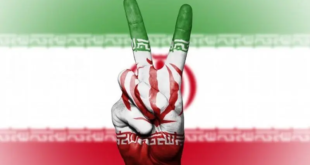 TEHRAN (FNA)- Asia can provide the finance Iran needs to develop its oil and gas reserves, the world’s second largest, limiting the impact of US sanctions and pressure, a top Iranian oil official said on Thursday.
TEHRAN (FNA)- Asia can provide the finance Iran needs to develop its oil and gas reserves, the world’s second largest, limiting the impact of US sanctions and pressure, a top Iranian oil official said on Thursday.
“The financial world is not just in the western hemisphere,” Hojjatollah Ghanimifard, vice president for investment affairs at Iran’s state oil company NIOC, told Reuters in an interview.
“Iran’s call on international financing for oil and gas can easily be moved to the east from the west.”
State-run Asian companies keen to secure future energy supplies have resisted pressure from the United States to stay away from the world’s fourth-largest oil exporter Iran.
The US has sought to isolate Iran over its peaceful nuclear program.
The United States and its Western allies accuse Iran of trying to develop nuclear weapons under the cover of a civilian nuclear program, while they have never presented any corroborative document to substantiate their allegations. Iran denies the charges and insists that its nuclear program is for peaceful purposes only.
Tehran stresses that the country has always pursued a civilian path to provide power to the growing number of Iranian population, whose fossil fuel would eventually run dry.
The US has imposed sanctions on Iran’s oil and gas sector for over a decade. More recently, it has put pressure on international banks not to finance deals in Iran.
State-run companies of Asian economies keen to secure future energy supplies are less susceptible to US pressure to stay out of the Islamic Republic and are taking a bigger role in its energy sector.
Following US pressures on companies to stop business with Tehran, many western companies decided to do a balancing act. They tried to maintain their presence in Iran, which is rich in oil and gas, but not getting into big deals that could endanger their interests in the US.
Yet, after oil giants in the West witnessed that their absence in big deals has provided Chinese, Indian and Russian companies with excellent opportunities to signing up to an increasing number of energy projects and earn billions of dollars, many western firms have now lost reluctance to invest or expand work in Iran.
“This kind of pressure from the United States is nothing new,” Ghanimifard said.
“Just the tactics are different. The policy is the same. We have learned to live without US technology, help and money. How easily we have been able to find new partners.”
Iran is negotiating an exploration deal with Asian oil companies for two oil and gas blocks in the Caspian Sea, he said, declining to say which companies were involved.
A study had shown that Iran’s Caspian region contains an estimated 21 billion barrels of oil and gas equivalent, he said.
The deal could take the form of a production sharing contract (PSC), if Iran’s parliament and authorities agreed that model of contract was the best for the high-cost Caspian, he added.
Iranian law forbids foreign investment in Iran’s upstream energy sector, but exceptions could be granted, Ghanimifard said.
Foreign companies working in the sector have done so on the basis of buy-back deals, under which they receive a share of output for a brief period as repayment for investment. Oil companies prefer PSCs, which give them a long-term share of output and allow them to book reserves.
Iran has several other deals pending with Asian oil and gas companies.
Ghanimifard said there should be news “in a few weeks” on deals for China’s state-backed offshore oil company (CNOOC) and India’s Oil and Natural Gas Corporation (ONGC). He declined to elaborate.
CNOOC is in talks for a $16 billion deal to develop the North Pars gas field and to build a liquefied natural gas (LNG) export terminal for the fuel.
ONGC is awaiting the nod from Iran for a $3 billion proposal to develop gas output from the Fars oil and gas block.
The oil prices would likely continue to fall for several months more before resuming its long-term upward trend based on rising demand from emerging economies, Ghanimifard said.
“The fall comes after the unreasonable rise in July,” he said. “But if what we see in China, India and other Asian countries in terms of demand growth continues, the trend will be up.”
US oil has fallen $32 from its peak over $147 a barrel in July as record fuel prices and a slowing economy have cut demand in the US, the world’s largest energy consumer.
 Eurasia Press & News
Eurasia Press & News


